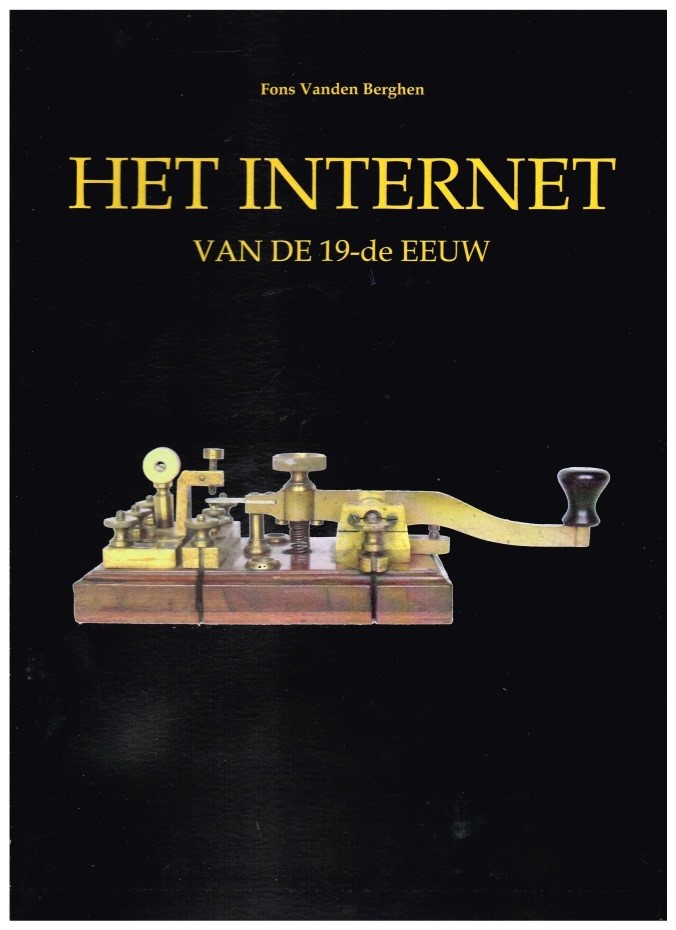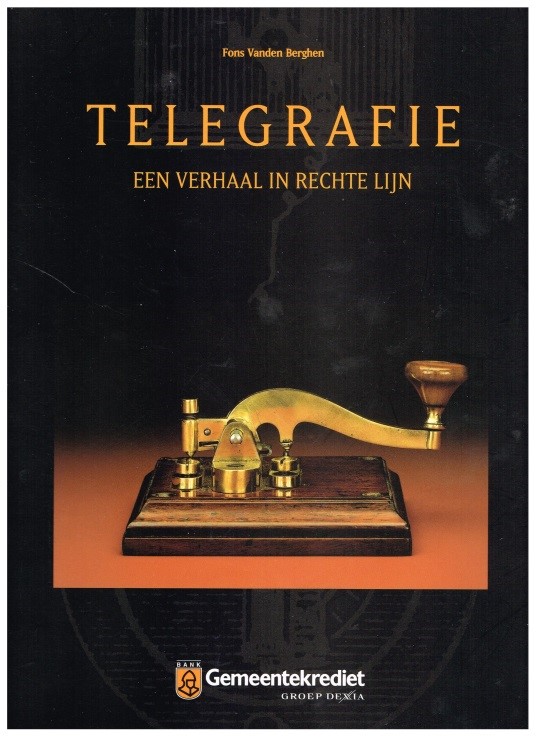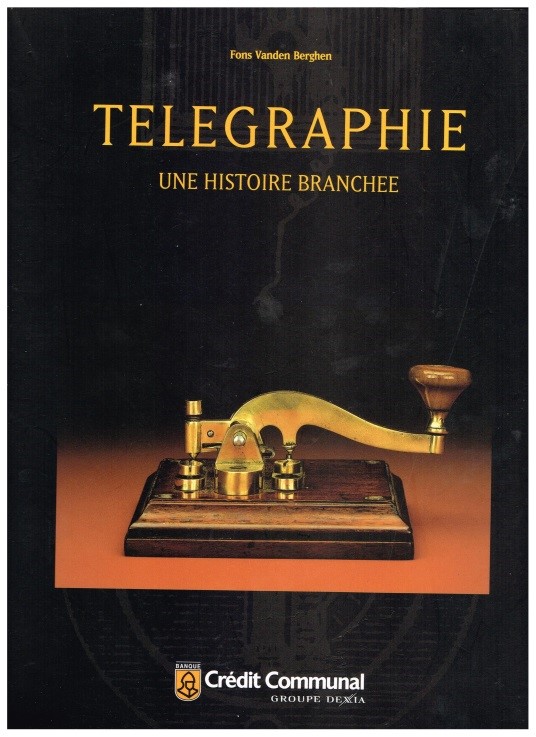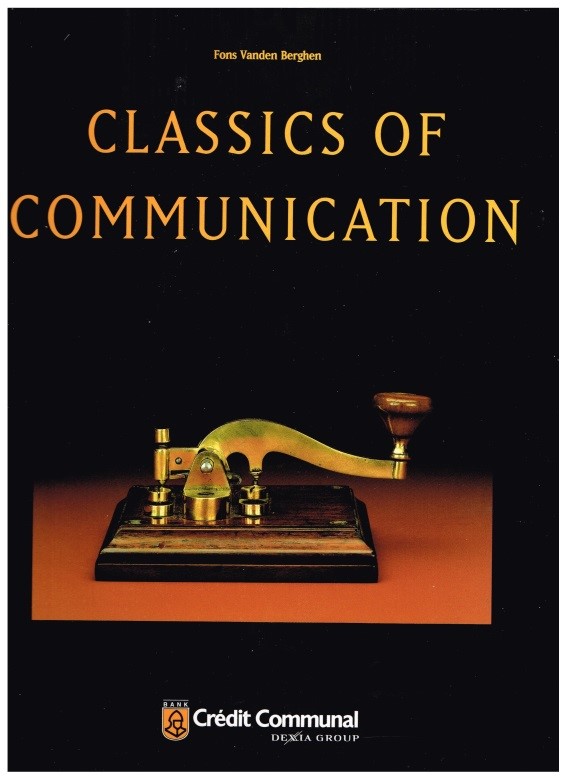




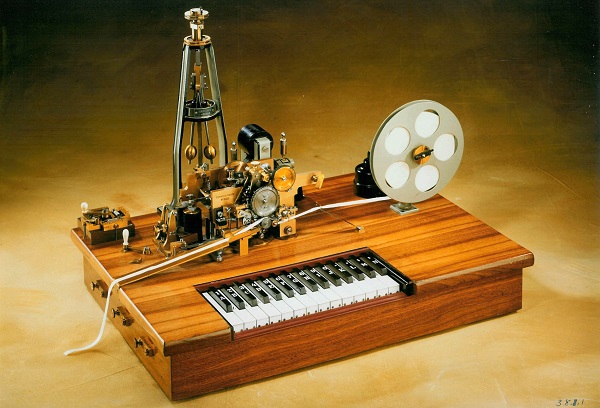






So far, I have written seven books related to Telegraphy.
And am thinking about an eight one…..

SHORT SUMMARY
Part 1 offers a broad introduction to Samuel Morse. Chapter 1 covers his life and career, starting with his early years and his first career as a painter (1810/1812 – 1832/1837), a period that is often overlooked. This is followed by a discussion of his transition into life as an inventor, which only began at the age of 41. Then I offer some remarkable facts about his later life… In chapter 2 I highlight his faithful collaborator Alfred Vail, a man who often receives little or no attention in traditional histories. Chapter 3 examines Morse’s first telegraph apparatus, offering a brief technical overview and including photographs of my 1837 replica.
Part 2 explores coding systems. Chapter 1 presents various aspects of Morse codes. Chapter 2 concentrates on codes used in historical devices from before, during and shortly after the development of Morse code. I also discuss here Morse code and its use in more detail.
Part 3 is dedicated to telegraph apparatus developed by Morse and other inventors that used Morse code.
Chapter 1 briefly covers fundamental electrical principles underlying the invention.
Chapter 2 presents, mainly through photographs of apparatus from my collection, devices that use Morse code. There are
probably many more technologies than you think... It also showcases various types of ‘straight keys’ — but probably not
enough for the keen collector ;o)
.
I took the opportunity to also showcase here other technologies that are completely unknown to most people.
Part 4 contains a collection of what I believe are interesting information and illustrations related to Morse and Morse code — material that didn’t quite fit into the previous sections.
I wrote this book in Dutch because I believe that it is only of interest to Belgian readers.
It describes the rise of the Belgian telecommunications museum at the end of the 19th century and then its evolution in the 20th century until its sad end in 1998. Hence the word "saga" in the title.
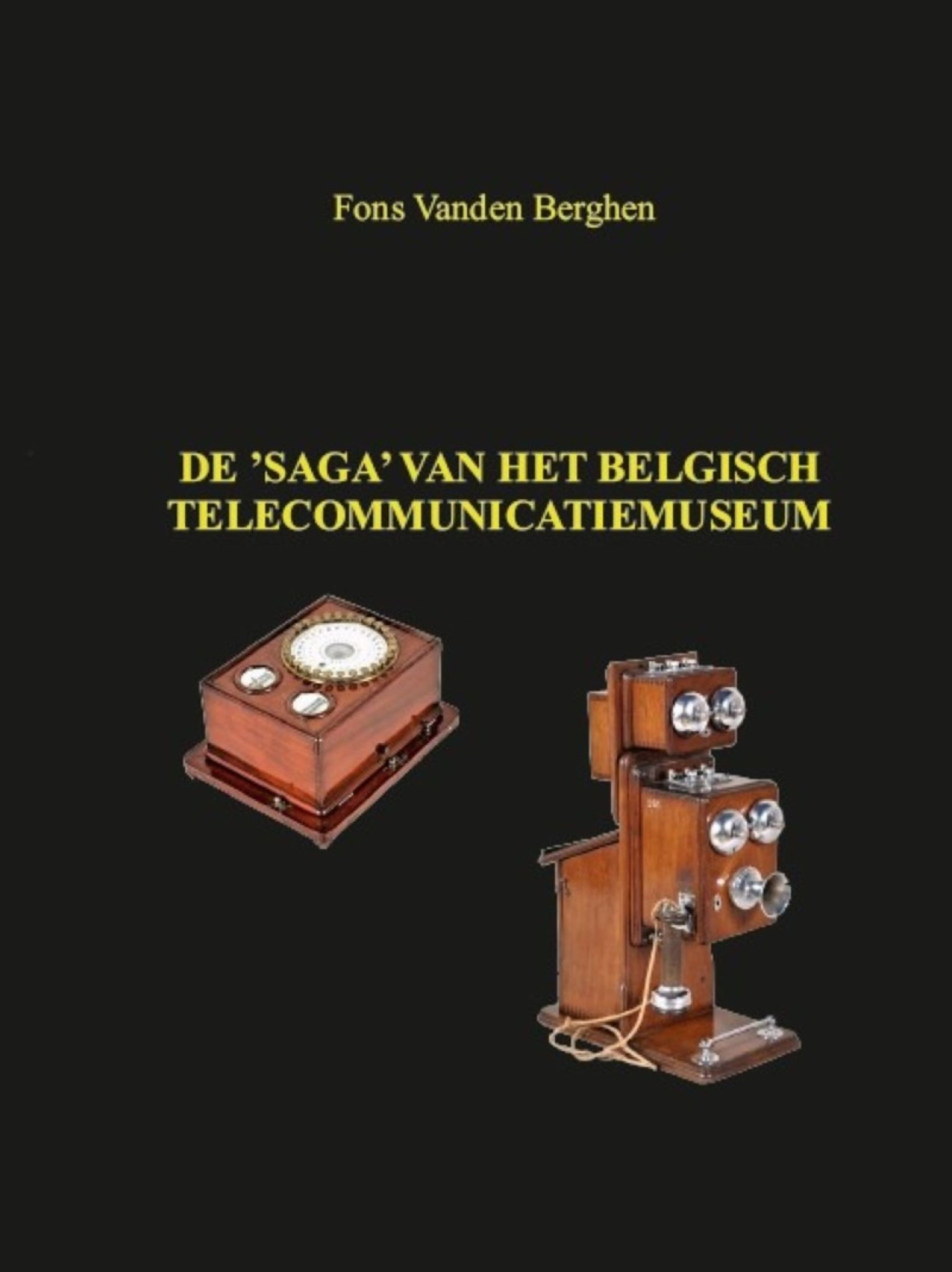
DE 'SAGA' VAN HET BELGISCH TELECOMMUNICATIEMUSEUM
TEN GELEIDE
Ik heb bewust de titel ‘De “SAGA” van het POSTMUSEUM in BRUSSEL’, waaronder dit museum vooral bekend stond, niet gebruikt. Immers, aangezien ik het hier verder (als verzamelaar van eerst telefoons en dan overgeschakeld naar telegrafen) hoofdzakelijk over de TELECOMMUNICATIE afdeling ga hebben, en dus natuurlijk over de TELEGRAFIE maar graag ook over de TELEFONIE. Officieel heet het museum trouwens sinds 1976: ‘MUSEUM voor POSTERIJEN en TELECOMMUNICATIE’. Ik gebruik in de tekst ook vaak, gemakkelijkshalve, de naam ‘museum’.
Waarom dit artikel?
Wel, wie weet er nog dat dit museum heeft bestaan, en wie heeft het ooit bezocht? Ik meen dat ik het antwoord op de eerste vraag, bij manier van spreken, op de vingers van mijn twee handen zal kunnen tellen, en op één hand voor de tweede vraag. Welnu, ik vind dat het bestaan en de geschiedenis van dit ‘instituut’ het verdienen om niet totaal vergeten te worden.
Mijn initiële bedoeling was om een artikel te schrijven van 3-4 pagina’s om toe te voegen op mijn website (www.telegraphy.eu ) . Ik beschikte immers maar over heel weinig informatie over het museum (waar ik wel een trouwe bezoeker van was). En vooral, door het feit dat ik een bevoorrechte getuige was van de overdracht van de verzameling door Belgacom naar de Koninklijke Musea voor Kunst en Geschiedenis, wou ik de gebeurtenissen rond deze transitie uit de doeken doen.
Zoals dat gaat ben ik eerst op zoek gegaan naar achtergrond informatie. Na een eenvoudige zoektocht op, vooral, het internet heb ik vervolgens enkele goede vrienden gevraagd om mij behulpzaam te zijn (u vindt hun namen achteraan in mijn dankwoord). Dat laatste heeft mij een enorme boost gegeven, vooral om ook de geschiedenis te beschrijven (al vanaf 1888!). Dit laatste dan mede dank zij mijn opzoekingen in het Rijksarchief in Brussel.
Let wel, dit is en blijft een vulgariserend werk.
Wie mijn andere boeken kent weet dat ik ze maximaal illustreer. Mijn meeste lezers zijn collega-verzamelaars en ik weet dus uit eigen ervaring hoezeer dat, voor diverse redenen, op prijs wordt gesteld. Ik had in de loop der jaren wel al wat postkaarten, uitgegeven door het museum, verkregen. Die ‘deelverzameling’ heb ik aardig kunnen uitbreiden. Ze zijn vooral interessant omdat ze toestellen (telegrafen en telefoons) tonen uit de verzameling van het voormalige museum. Dat heb ik verder kunnen aanvullen met illustraties uit de pers, folders van het museum, &c…
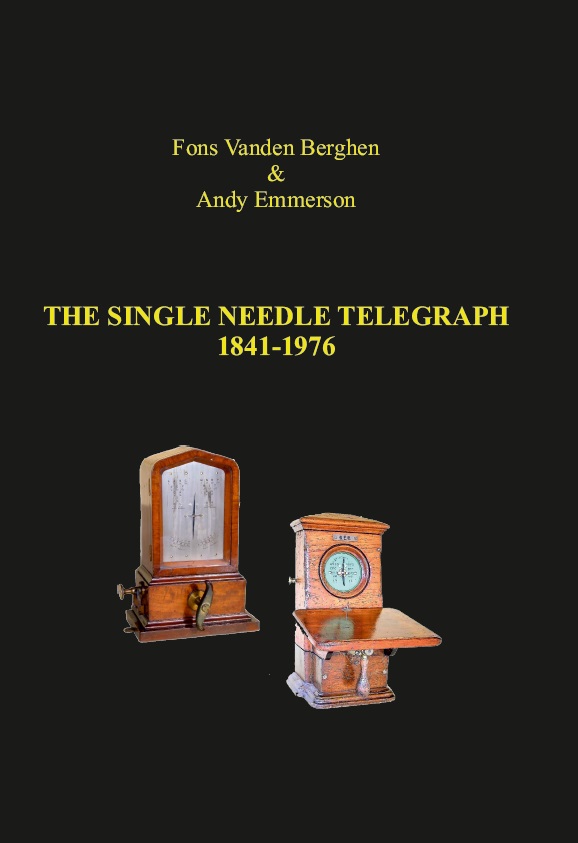
This is an adaptation of a book that was written but never published until now.
It was written by my good friend Andrew ('Andy') Emmerson from Northampton, England, president of the British ‘Telecom Heritage Group’.
During my first early searches for a telegraph (around the end of the 1980s) I got my hands on a photocopy of the first draft version, from 1984, of that booklet.
It is only now (mid 2021), due to a combination of circumstances, that I learned that Andy has reworked the original script and proposed to a publisher in 1993 in order to make it available to (mainly) collectors and historians.
This did not happen because the publisher doubted (rightly so in my opinion) whether there would be interest and demand for it.
But I find his monograph so valuable and well written (including Andy’s personal experiences) that it would be a shame to lose the unique information it contains.
I have therefore consulted with him, and received his approval, to include the content in my website.
Some chapters do go quite deeply into certain aspects that I think are less relevant for most visitors of my website (especially for those outside the UK).
So, with Andy's agreement, I've cut out a few chapters (I've copied everything else literally). I have done this, for example, in the chapters about the operating procedures and code conventions of the British Railways, some 'complicated' technical details (such as wiring in circuits, concentrator working, repeaters, ...), details about faults and testing,
On the other hand, I was allowed to add a lot, both paragraphs and chapters.
The original text had no photos. In order to embellish the text, I have included a lot of photos of apparatus from my collection (or that have ever been part of it). And in an addendum, I have added some more photos that show mainly details of the apparatus and also some amusing illustrations... (well over a hundred in total!). This book (booklet), in English, has 57 pages.
CONTACT ME IN ORDER TO GET A FREE DOWNLOAD via fons.vandenberghen@telenet.be
My fourth book
This fourth one is only available in Dutch and is fully oriented to the beginning of the telegraph network and services in Belgium and its further growth here in the 19th century. I am calling this the ‘inter-net’. For the people of that time it was a real Revolution, while the actual internet is an Evolution.
HET INTER-NET IN BELGIË IN DE 19de EEUW

Dit boek beschrijft de opkomst en de evolutie van het telegraafnet in België.
Ik citeer hier uit de introductie:
Het woord ‘inter-net’ in de titel heb ik, wegens zijn connotatie met ‘internet’, niet toevallig gekozen De eerste operationele telegraaflijnen dateren van rond 1840 (Wheatstone in 1839 in Engeland, Morse in 1844 in Amerika). Maar vanaf het einde van de jaren 1840 groeiden die enkele lijnen uit tot steeds grotere landelijke netwerken. En vanaf het begin van de jaren 1850 kwamen er al internationale verbindingen tot stand. Zo hadden we in België al in 1851 een verbinding met Frankrijk en vervolgens met Pruisen en Nederland in 1852. En in 1853 kwam daar een verbinding bij met Engeland via een onderzeekabel naar Dover! Kaarten uit de jaren 1860-70 tonen al een uitgebreid spinnenweb van aangelegde kabels over Europa en de wereld. De eerste trans-Atlantische kabel uit 1858 werkte maar heel even, maar in 1865 was ook deze interconnectie een feit. Het overbrengen van berichten tussen steden en grote gemeentes, nationaal en internationaal, gebeurde ‘met de snelheid van de bliksem’, alleen de tijd voor de lokale verdeling kwam er nog bij.
Men moet zich bewust zijn dat vóór deze periode het overbrengen van berichten hier te lande meestal meerdere dagen kon bedragen. Voor de mensen van toen, en waarvan de overgrote meerderheid natuurlijk ook geen begrip had van het bestaan van de elektriciteit, was dat zoveel als een wonder. Voor hen was hun ‘inter-net’ een enorme technologische Revolutie. Waaraan ik hier wil toevoegen dat voor ons de opkomst en uitbouw van het internet een eerder normale Evolutie is geweest.
Wie weet nog van waar we komen, hoe het begonnen is? Kijk hier eens mee achterom om te zien hoe de droom om de tijd en de ruimte te overbruggen werd waargemaakt. En dat kan nooit kwaad, want wat heden ontwikkeld wordt, is immers de vrucht van ontelbare inspanningen van pioniers, uitvinders, wetenschapslui, entrepreneurs, optimisten in het verleden. Misschien begrijpen we beter het heden en krijgen we een beter inzicht in de toekomst door eerst eens naar het verleden te kijken.
Het boek beslaat 84 pagina’s en is rijkelijk geïllustreerd met een 70-tal foto’s van apparaten uit mijn verzameling (allen ooit in gebruik in België in die vroege periode) en ca. 90 illustraties.
Interesse? Contacteer mij via fons.vandenberghen@telenet.be
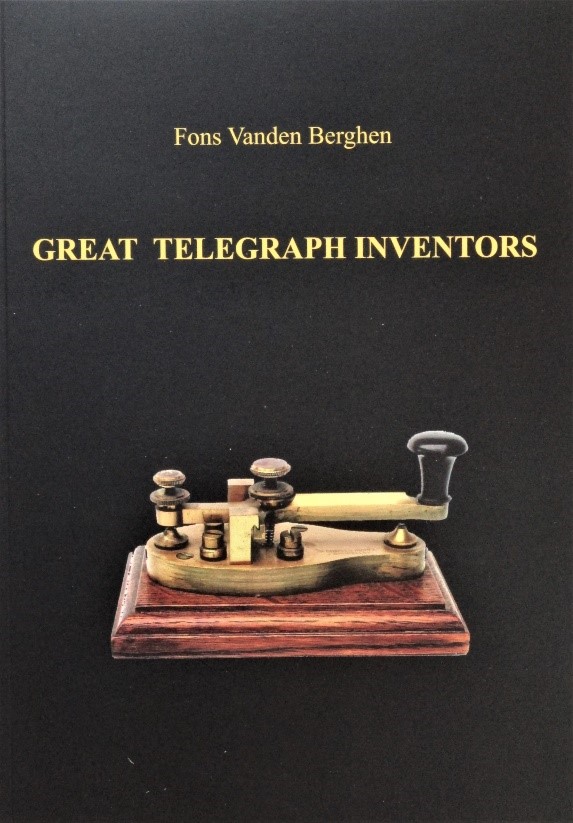
You can see the table of contents via HERE.
*****
PART OF MY INTRODUCTION
This book, intended as a reference work, is primarily written for ‘keen collectors’ of telegraph instruments. Here collectors will find plenty of background information about a number of important inventors of their desirable items. As a bonus I have also included a very large number of photos of devices that once were in my collection. as well as other illustrations that have a link to these inventors (over 800 in total!).
As I am focusing on the inventors, you will not learn a lot about the telegraphs and other telegraph apparatus as such. I have covered all of this in my second book ’Het Internet van de 19-de Eeuw’ (‘The Internet of the 19th Century’), spread over 434 pages and illustrated with about 650 photos. It is free to download (see the homepage of my website www.telegraphy.eu . That book is in Dutch, but the many images are in an ‘international language’.
(Note that my 'Flemish English' in the book has been corrected by native speakers.)
*****
A REVIEW
Here is a review from an independent reader (who doesn't know me): Paul Wills, Coatesville, PA - USA
Great Inventors of Telegraphs - About the lives, the inventions, the apparatus, the companies, … of 15 famous telegraph inventors in the 19th century by Fons Vanden Berghen takes a slightly different approach in presenting the history of telegraphic technology. Rather than writing merely a biography or technical book, he chose to include both subjects in his overview of inventors.
I say “overview” because it covers many of the important people who contributed to the science of distant communication. The term overview, however, is not sufficient as the author provides much more information than would be expected from a simple overview.
For example, in each chapter, the reader will find a brief biography of the inventor followed by a description of the challenges that he encountered while turning his idea into a marketable system.
The author then goes into some technical detail that includes schematics, patent drawings, and detailed photographs to describe how that system worked. He finishes with a collection of historic illustrations and beautiful photographs of restored equipment; about all of which were from his collection.
What results, then, is an “overview” of inventors that still looks deeper into the personal and technological details about the inventor and his invention(s). This makes it perfect for the person who doesn’t want to read a complete biography of an inventor but still wants more than a cursory paragraph or two. For those who want to go deeper, the author provides a bibliography at the end of each chapter.
The book starts with the semaphore system developed by Claude Chappe (as well as several other “visual” communications systems) and ends up with Marconi’s wireless telegraph while covering everything in between including printing telegraph systems.
Supplements are included at the end that provide a summary of other inventors that deserve mention as well as a brief look at the manufacturing of the early telegraph equipment.
To summarize; lots of interesting reading and plenty of illustrations. What more could the telecommunications enthusiast want?
*****
Interested in it? Contact me
**************
